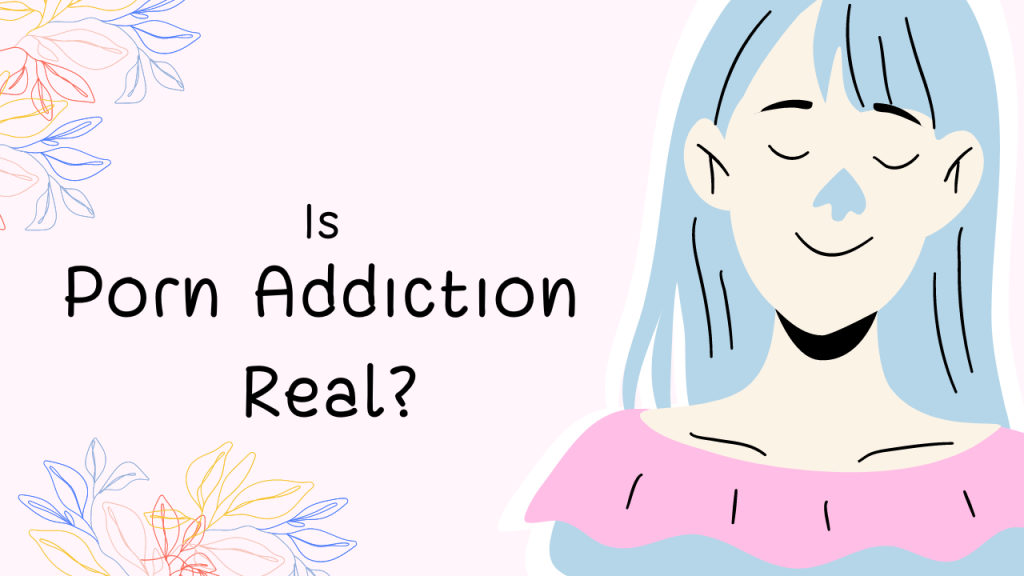
Is Porn Addiction Real? Porn addiction has become a topic of debate in recent years, with some experts questioning whether it is a genuine mental disorder or not. On one hand, many people claim to experience an emotional dependence on pornography, which interferes with daily life, relationships, and their ability to function. These individuals may become dissatisfied with their own sex life or engage in risky behaviors, such as using porn at work.
On the other hand, some researchers argue that porn addiction is not a true clinical condition. Instead, they believe that it may be part of a broader compulsive behavior with negative consequences to one’s physical, mental, social, or financial well-being. Organizations such as the World Health Organization and the American Psychiatric Association have not yet recognized porn addiction as an official diagnosis, which adds to the controversy surrounding this issue.
Key Takeaways
- Controversy surrounds the topic of porn addiction, with some questioning its validity as a mental disorder.
- An emotional dependence on pornography can interfere with daily life, relationships, and overall functioning.
- Major organizations like the World Health Organization and the American Psychiatric Association have not yet recognized porn addiction as an official diagnosis.
Is Porn Addiction Real?
Porn addiction is a subject that has sparked debate among professionals and researchers. While some believe it to be a genuine issue, others argue that it is not a real condition at all. In this section, we will explore different perspectives regarding the existence of porn addiction.
Some doctors propose that porn addiction could fall under the category of hypersexual disorders, which encompasses behaviors such as excessive masturbation (source). A 2019 study suggests that the prevalence of hypersexual disorders might range between 3-6%; however, determining the exact rates is challenging due to the lack of formal classification.
Supporters of the concept of porn addiction believe that, like any other addiction, it can have a negative impact on an individual’s daily life activities. They argue that when a habit begins to interfere with a person’s regular routines, relationships, and self-perception, it can be considered an addiction.
On the other hand, some research indicates that porn addiction is not a legitimate condition [source]. Detractors of the idea suggest that the issue may be rooted more in porn-shaming culture rather than actual addictive behavior. By putting the blame on porn, people might be using it as a scapegoat for underlying personal problems or relationship issues [source].
As it stands, the question of whether porn addiction is real remains inconclusive, with varying opinions and research findings. To better understand this subject, further studies and a more comprehensive classification of these disorders are required.
Defining Pornography Addiction
Pornography addiction refers to an individual’s inability to resist consuming pornographic materials, even if they desire to stop. This compulsive behavior may interfere with various aspects of their daily life, including work, relationships, and other obligations. With the prevalent accessibility of internet porn, understanding and addressing this issue is crucial.
Certain factors contribute to the development of a pornography addiction. These might include an individual’s personal history, environmental influences, or emotional triggers. Furthermore, ongoing exposure to pornographic materials can cause changes in the brain that may make quitting more difficult.
There is ongoing debate among experts about the legitimacy of classifying pornography addiction as a disorder. Some research suggests that it may not be a real condition, while other studies point to comparable brain activity between porn addicts and those suffering from drug addictions. As a result, opinions on the topic continue to vary.
Pornography addiction is characterized by a persistent inability to resist pornographic materials, which ultimately disrupts an individual’s daily life. Factors that may contribute to this addiction include personal history, environmental elements, and emotional triggers. Despite the ongoing debate in the scientific community, it is essential to recognize and address this issue for those affected by it.
Causes and Contributing Factors

Biological factors play a role in porn addiction as viewing explicit content triggers certain changes in brain chemistry. These changes release “feel-good” neurotransmitters, such as dopamine, which create a pleasurable sensation. Prolonged exposure to porn can cause individuals to develop a tolerance to these sensations, leading to compulsive behavior and a perceived dependency.
Psychological factors also contribute to the development of porn addiction. Some individuals may turn to porn as a means of escaping psychological distress or coping with other mental health issues. This can create a cycle where the person relies on porn to numb negative emotions, further reinforcing the dependency on the behavior.
Relationship problems can serve as another catalyst for porn addiction. When individuals face difficulties in forming or maintaining intimate relationships, they may seek solace in porn. This can become a compulsive habit that negatively impacts their ability to sustain healthy connections in the long run.
Porn addiction is a complex issue that arises from various biological and psychological factors. Understanding these factors can help individuals and therapists better address the underlying issues and work towards recovery.
Signs and Symptoms
Porn addiction, like any other addiction, has a range of signs and symptoms experienced by individuals. It is important to recognize these symptoms to better understand and address the issue. The following list presents some of the key symptoms associated with porn addiction:
- Preoccupation: Constant thoughts about pornography dominate the person’s mind, making it difficult to focus on other aspects of their life, such as work, hobbies, or relationships.
- Increased consumption: An individual may watch more explicit or a larger volume of pornographic content over time to achieve the same level of satisfaction.
- Inability to stop: Despite negative consequences, the person finds it difficult to quit or reduce their consumption of pornography.
- Neglecting responsibilities: The addiction takes precedence over personal and professional obligations, leading to declines in work or school performance, as well as difficulties maintaining relationships.
- Mood disorders: Symptoms like anxiety, depression, and irritability might accompany porn addiction, resulting in emotional turmoil and a reduced quality of life.
In addition to the symptoms mentioned above, individuals struggling with porn addiction may also engage in risky behavior, such as viewing pornography at work or engaging in unsafe sexual practices. Identifying these signs and symptoms allows professionals and loved ones to offer appropriate support and assistance in addressing the addiction.
Treatment and Management
Professional Therapy Options
One of the common approaches to treat porn addiction is psychotherapy. There are various forms of therapy that mental health professionals can use, such as cognitive behavioral therapy (CBT) and acceptance and commitment therapy (ACT). CBT involves helping individuals recognize and change negative thought patterns, while ACT encourages people to accept uncomfortable thoughts and feelings instead of trying to avoid or eliminate them. A sex therapist can also provide counseling to individuals and couples dealing with the repercussions of porn addiction.
Medication and Therapeutic Interventions
In some cases, medication can be part of the treatment plan for porn addiction. Medications can help in managing underlying mental health disorders, such as depression or anxiety, that may contribute to the addiction. Therapeutic interventions like motivational interviewing may also be useful, as they aim to help individuals understand the impact of their addiction and assist them in finding the motivation to change.
Support Networks and Recovery
Support groups are an essential part of the recovery process. They offer a safe space for individuals to share their experiences, struggles, and progress. A supportive network of friends, family members, and peers can be instrumental in enabling someone to overcome porn addiction. Attending meetings, seeking professional help, and staying engaged in the recovery process are integral steps in overcoming porn addiction and maintaining mental health.
In conclusion, various modes of treatment and support networks are available to help individuals grappling with porn addiction. Psychotherapy, medication, and support groups provide a comprehensive approach to recovery and ensure long-term success in overcoming this mental health disorder.
Note – If you have any question, please Contact Us






